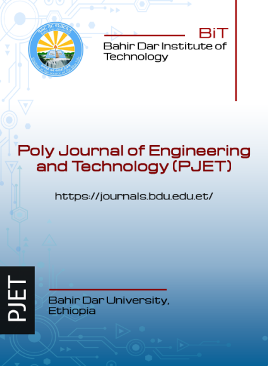Design, manufacturing and performance evaluation of parabolic dish solar cooker using pentagonal shaped cooking vessel
Abstract
Energy is essential to improve the social and economic standing of humanity as well as its standard of living. This study's objectives were to design, produce, and examine the parabolic dish solar cookers' thermal performance. This device was constructed on a steel plate with a full-circumference mirror glass reflector. The sun's rays were focused on this reflecting surface, creating the high temperature required for cooking. Cooking and monitoring the temperature (energy concentration) reached at the bottom of the cooking pot were used to test the device. The no-load test results for the pentagonal shaped cooking pot indicated that the maximum temperature at the first Figure of Merit and midpoint were 0.314 /W/m2 and 280.52, respectively.
The second Figure of Merit, thermal efficiency, cooking power, and standard cooking power were, according to the load testing findings, 555.1 W, 480.68 W, 42.04%, and 0.539, in that order. During the cooling test, optical efficiency of 0.37 and heat loss factors of 43.66 W/K.m2 were discovered. Furthermore, cooking the same quantity of rice and maize in half a litter of water (300 g each) took forty minutes, but cooking Shiro Wot in one litter of water (nine soup spoons) only took nineteen minutes. The study demonstrates the usage of parabolic dishes in solar cookers for cooking. The study's conclusions include suggestions for enhancing the cooking vessel's design and encouraging the use of parabolic dish solar cookers in isolated and off-grid areas. In general, the study advances the field of economical and environmentally sustainable cooking technology and emphasizes the importance of tackling energy poverty and environmental sustainability in the framework of global development.
Copyright (c) 2024 Poly Journal of Engineering and Technology (PJET)

This work is licensed under a Creative Commons Attribution-ShareAlike 4.0 International License.


